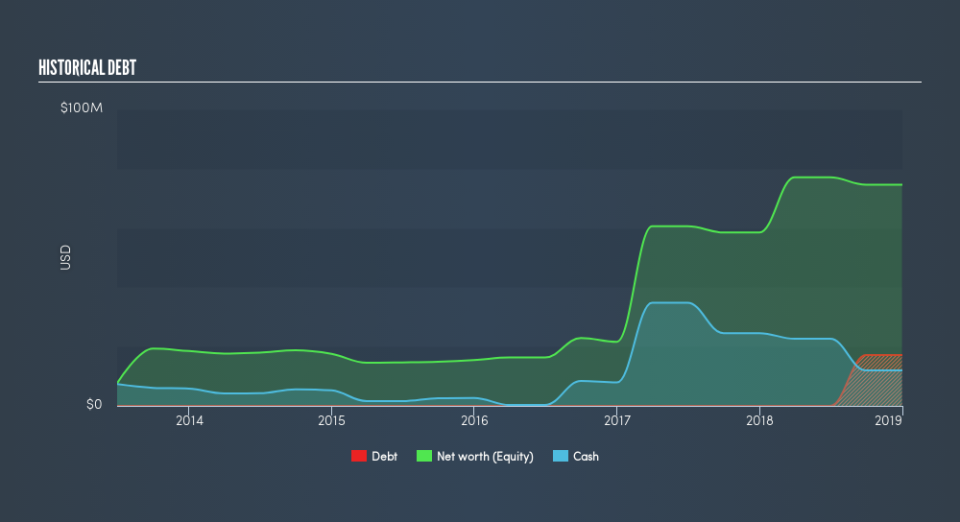The Paringa Resources (ASX:PNL) Share Price Is Down 79% So Some Shareholders Are Rather Upset

Long term investing is the way to go, but that doesn't mean you should hold every stock forever. We really hate to see fellow investors lose their hard-earned money. Spare a thought for those who held Paringa Resources Limited (ASX:PNL) for five whole years - as the share price tanked 79%. We also note that the stock has performed poorly over the last year, with the share price down 60%. The falls have accelerated recently, with the share price down 45% in the last three months.
Check out our latest analysis for Paringa Resources
Paringa Resources hasn't yet reported any revenue, so it's as much a business idea as an actual business. We can't help wondering why it's publicly listed so early in its journey. Are venture capitalists not interested? So it seems shareholders are too busy dreaming about the progress to come than dwelling on the current (lack of) revenue. For example, they may be hoping that Paringa Resources finds fossil fuels with an exploration program, before it runs out of money.
We think companies that have neither significant revenues nor profits are pretty high risk. There is usually a significant chance that they will need more money for business development, putting them at the mercy of capital markets. So the share price itself impacts the value of the shares (as it determines the cost of capital). While some such companies go on to make revenue, profits, and generate value, others get hyped up by hopeful naifs before eventually going bankrupt. It certainly is a dangerous place to invest, as Paringa Resources investors might realise.
Our data indicates that Paringa Resources had US$15,696,000 more in total liabilities than it had cash, when it last reported in December 2018. That puts it in the highest risk category, according to our analysis. But with the share price diving 27% per year, over 5 years, it's probably fair to say that some shareholders no longer believe the company will succeed. You can see in the image below, how Paringa Resources's cash levels have changed over time (click to see the values). You can see in the image below, how Paringa Resources's cash levels have changed over time (click to see the values).
It can be extremely risky to invest in a company that doesn't even have revenue. There's no way to know its value easily. What if insiders are ditching the stock hand over fist? I'd like that just about as much as I like to drink milk and fruit juice mixed together. It only takes a moment for you to check whether we have identified any insider sales recently.
What about the Total Shareholder Return (TSR)?
Investors should note that there's a difference between Paringa Resources's total shareholder return (TSR) and its share price change, which we've covered above. Arguably the TSR is a more complete return calculation because it accounts for the value of dividends (as if they were reinvested), along with the hypothetical value of any discounted capital that have been offered to shareholders. We note that Paringa Resources's TSR, at -77% is higher than its share price return of -79%. When you consider it hasn't been paying a dividend, this data suggests shareholders have benefitted from a spin-off, or had the opportunity to acquire attractively priced shares in a discounted capital raising.
A Different Perspective
Paringa Resources shareholders are down 60% for the year, but the market itself is up 12%. Even the share prices of good stocks drop sometimes, but we want to see improvements in the fundamental metrics of a business, before getting too interested. Unfortunately, last year's performance may indicate unresolved challenges, given that it was worse than the annualised loss of 25% over the last half decade. We realise that Buffett has said investors should 'buy when there is blood on the streets', but we caution that investors should first be sure they are buying a high quality businesses. You could get a better understanding of Paringa Resources's growth by checking out this more detailed historical graph of earnings, revenue and cash flow.
Of course Paringa Resources may not be the best stock to buy. So you may wish to see this free collection of growth stocks.
Please note, the market returns quoted in this article reflect the market weighted average returns of stocks that currently trade on AU exchanges.
We aim to bring you long-term focused research analysis driven by fundamental data. Note that our analysis may not factor in the latest price-sensitive company announcements or qualitative material.
If you spot an error that warrants correction, please contact the editor at editorial-team@simplywallst.com. This article by Simply Wall St is general in nature. It does not constitute a recommendation to buy or sell any stock, and does not take account of your objectives, or your financial situation. Simply Wall St has no position in the stocks mentioned. Thank you for reading.

